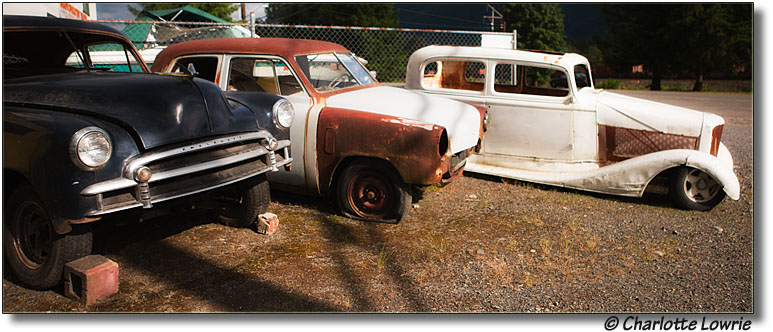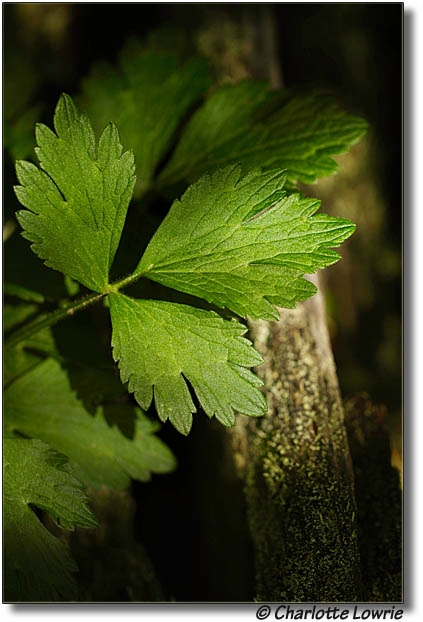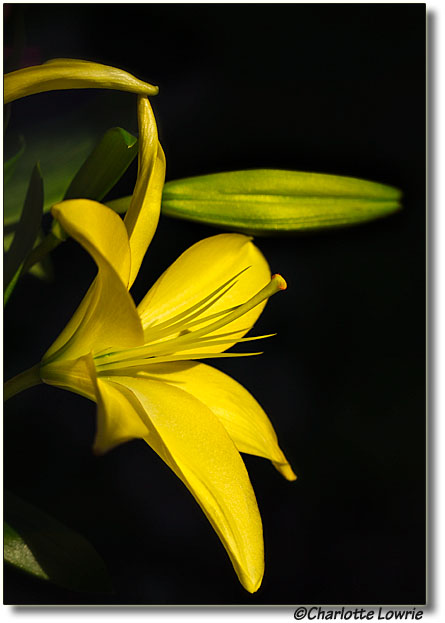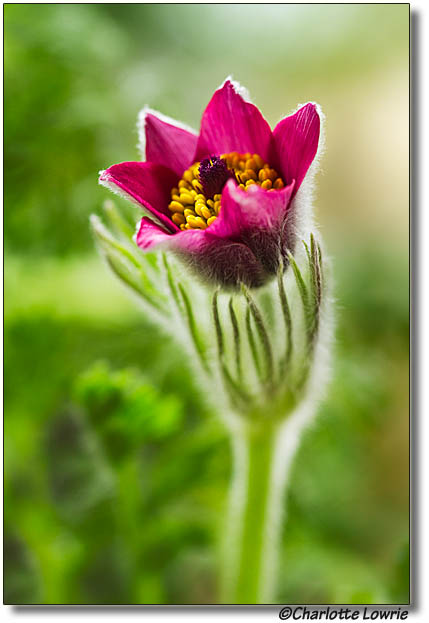By Charlotte Lowrie
 Keeping a journal of one sort or another is a habit that I’ve had for most of my life. Lately, as I study creativity and continue to study photography, I thought it would be good to keep a journal. Like a life journal, this journal is an unorganized collection of thoughts, challenges, observations, and unresolved issues, ideas, and thoughts that I want to pursue further.
Keeping a journal of one sort or another is a habit that I’ve had for most of my life. Lately, as I study creativity and continue to study photography, I thought it would be good to keep a journal. Like a life journal, this journal is an unorganized collection of thoughts, challenges, observations, and unresolved issues, ideas, and thoughts that I want to pursue further.
So unlike the other articles on this site, this journal is ongoing writing. The journey of photography is done one day at a time. A single day may engender one or a cacophony of thoughts and ideas. I hope that sharing my thoughts will encourage, challenge, or otherwise get you to thinking about your journey as a photographer.
Before I begin, I want to clarify that my work as a photographer and as a writer is inseparable from my faith in Jesus Christ, who is my inspiration and my guide. A number of critics want me to separate my work from my faith. But for me, there cannot be any separation. So in this journal, I often speak of God.
July 4, 2010: Seen Along the Way
Very often on my way to shoot a specific location, I am waylaid by things that I see along the way. Most often, the things I see are comical, unusual, or just plain weird. And most often, the "seen-along-the-way" shots are in small towns where creativity of all sorts thrives.
I was on my way to shoot Bridal Veil Falls in the Cascade National Forest when I was taken with the dramatic cloud "hats" on the mountain tops. To get to a place where I could photograph the mountains without including hundreds of high-line wires and poles in the images, I happened on a pictures that I would not have found otherwise. Here are a few of the images I saw along the way to the waterfalls.

I may never have considered putting a wooden household door on a school bus, but some creative person did just that and included a deadbolt lock on the door.

Besides the color, I was fascinated to see that this bus has a fly swatter mounted on the right front window--doubtless a good tool to have on hand when flies fly through the broken windshield. Though it's not shown in this image, this bus has a louvered wood door.

These and other sights along the way to the waterfall absorbed the shooting time that I had for that day. Although I didn't make it to the waterfalls, I definitely enjoyed the journey.
May 23, 2010: Looking for the Light
 Every photographer has certain things that they look for in images, but the one thing that virtually all photographers seek is the special light that transforms the ordinary into the extraordinary. While this holds true for all types of photography, in nature photography, it's a matter of looking for transformative light that God provides. This type of light singles out elements from other elements in the scene. This light plays nicely with shadows to create a sense of depth and dimension. This light adds color and visual warmth. In short, this is the light that you recognize immediately as being right.
Every photographer has certain things that they look for in images, but the one thing that virtually all photographers seek is the special light that transforms the ordinary into the extraordinary. While this holds true for all types of photography, in nature photography, it's a matter of looking for transformative light that God provides. This type of light singles out elements from other elements in the scene. This light plays nicely with shadows to create a sense of depth and dimension. This light adds color and visual warmth. In short, this is the light that you recognize immediately as being right.
When I shoot nature images, I walk around simply "looking for the light." Once I see it, I evaluate the subject that's in it. And if both the light and the subject are "right," I make the picture. If the light isn't right, I walk away, or I wait for the light to change. I've shot enough mundane images to know that a good subject without good light is just another picture, and no amount of Photoshop trickery can replicate the beauty of natural light.
A good part of the "looking" process involves walking about mindfully, slowly, fully attentive, open to everything and all that the light reveals.
In the accompanying picture, I admit that I normally would not have photographed a simple leaf. In fact, I was expecting a much more spectacular subject, although I had no idea what it would be. But I stopped to look at the leaf because I was looking for the light. And sure enough, it was the kind of light that plays nicely with shadows. A simple subject in stunning light that reveals beauty that I would otherwise overlook if I hadn't been looking for the light. Serendipitously, the leaf grew just above a piece of bark. And that completed the story of the image: The present and the past each playing a role in the here and now.
I suspect that few will see what I see in this image, nor will they know that this image reminded me to not overlook simple subjects that have their own unique beauty.
I hope that you will walk mindfully, looking for the light, and accepting what it has to offer.
May 8, 2010: Getting Tired of the Same Old Pictures
Speaking of inspiration...inspiration doesn't always have to be positive to provide inspiration. One of my best motivators is getting really sick and tired of taking the same pictures over and over again. The actual subject may change, but the technique, the approach, and, most important, my thinking, hasn't changed. What works once or twice or five times is fine. But past that point, I get frustrated. The frustration pushes me to look for something different, some new approach, and some new thinking.

I thought about a recent situation where a client contacted me wanting to buy a picture of gerberas that I had made a year or so ago. The client had a red gerbera picture that she had purchased, and she wanted a "mate" for it. She sent me the existing image -- a red gerbera with a single water droplet on the edge of a petal. I looked at it next to my image, and I saw that the other person's picture had a sense of poetry to it. My image was vibrant and graphic, but it was not poetic. Of the two images, I preferred the poetic image.
Today I was shooting in the same old way, using techniques and approaches that had worked previously. But the images were simply not good enough. Then I remembered to look for the poetry in the subject. And I also remembered that the "first look" is often the one that is best. So I stopped trying and started looking and responding to what my eyes saw. Then as I began shooting again, I looked for the poetry, and, sure enough, it was there. It was there in the lines and shapes, the convergence, the grace and form of the lily. The poetry was there all along, but I had literally "over-looked" it.
Photography is much like writing. I've always believed that to be a good writer, you must first be a good thinker and someone who can feel and experience the story. It's the same with photography.
Nothing exists in a vacuum. Everyone and everything has a story. So whether it's writing or shooting, it is all about telling and showing the story.
May 2, 2010: Spring Rain
Chilly temperatures, wind, and rain are the least inspiring weather conditions for photography in my opinion. Shooting has been slow and frustrating as a result. It seems that there are fallow periods in shooting just as there are in other areas of life. I watch for the sun breaks with a camera ready to shoot.
On a happier note, my new Canon Rebel T2i Field Guide is now shipping.
April 18, 2010: A Recommendation for PhotoVision DVDs
Just a quick note this week. Chase Jarvis recently announced a new Live creative education Internet channel, creativeLIVE.com. Be sure to check it out.
I subscribe to the PhotoVision DVD series, and want to recommend it to you. Their 2-hour PhotoVision Video Seminars are a great way to stay current on photography techniques, as well get innovative marketing and business ideas.
PhotoVision also offers calibration targets that are excellent.
To learn more, visit the PhotoVision Web site.
April 2, 2010: Keep It Simple
 I've found that the less gear that I carry, the more pictures I shoot. Sure, I may miss having the lens that I left behind in the car, but I do not miss the added weight and juggling of stuff. And, inevitably, I find a way to get the shot that I want with the lens or lenses I have with me.
I've found that the less gear that I carry, the more pictures I shoot. Sure, I may miss having the lens that I left behind in the car, but I do not miss the added weight and juggling of stuff. And, inevitably, I find a way to get the shot that I want with the lens or lenses I have with me.
But this principle applies to many other things in life. The simpler things are, the more fun they are. It's when I worry too much, complicate things too much, process images too much, that things get tedious and hard. Of course, there are times when complexity is necessary and pays rich dividends. Thus the challenge is to recognize when complexity is needed and when it is not.
Simplicity also applies to image composition. Anytime I over think the composition of a subject or scene, the image usually ends up in the trash. Sometimes it's hard to recognize and respect that what brought my eye to the subject or scene is almost always what I should shoot--and that I should shoot it in the way I initially saw it. Afterward, I'm free to explore other approaches. But when I ignore that initial impression, I miss capturing the subject that resonated in my heart. I believe that if it resonates with me, it will also resonate with some or many people who view my images.
It's also true that the more I limit our mobility during shooting, the fewer shooting options I have to use. For example, the accompanying image of a red Pisque flower was shot handheld. Realizing that the light was low, I mounted the camera on the tripod and continued shooting. But the truth is that the tripod took out the poetry of movement--the poetry of movement that finds the sweet spot of composition. While I got perfectly sharp images with the tripod, none were as "personal" as this first image that I shot freehand. If only I could have rock-steady hands for shooting. But, alas, it is not to be. And since I care a lot about tack-sharp focus, I am learning to live with the limitations of shooting with a tripod more often than not--particularly when I want more extensive depth of field.
My assignment this week is to remember to Keep It Simple.
March 30, 2010: Catching up
- “It is your vision of what can be from what is that is creative.” (Prayer insight)
- Whatever you create has to be from the heart. You have to feel it, know it, and connect with it. It must be imbued with the life and passion that comes from your knowledge of it.
- “Do not crowd out creativity with too many thoughts. Give it space and time to breathe.” Shift the mind into neutral and see what it creates without really trying.
- In a world filled with alarm clocks, dirty laundry, & deadlines, the struggle is to find the time and space creativity needs to blossom.
Related articles:

